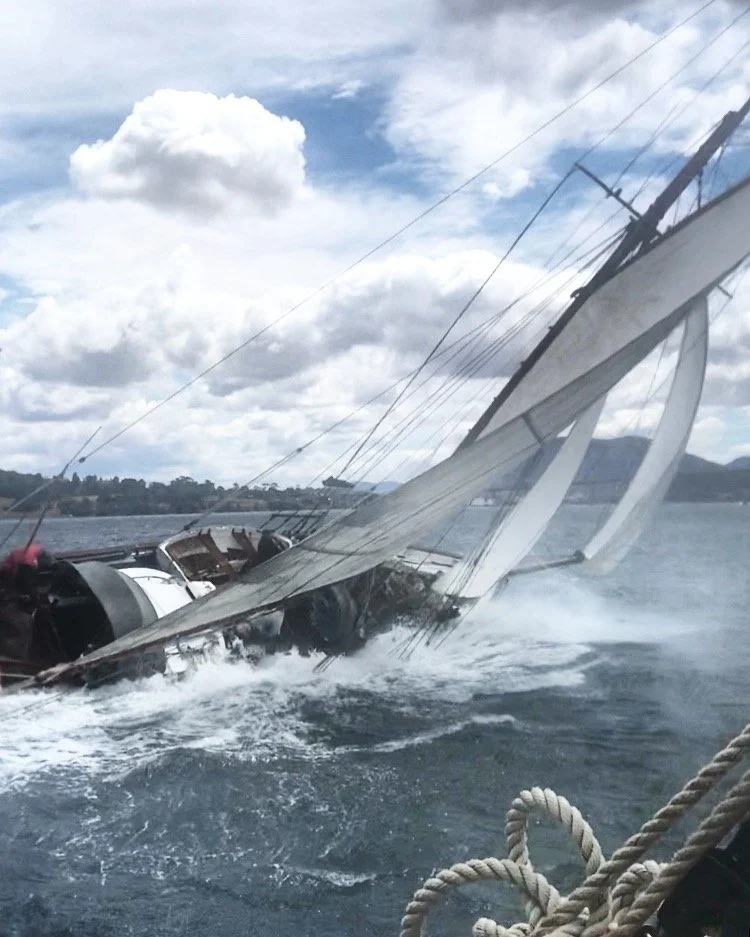Are safety standards achieving the goal?
STORM BAY -No lifelines!
A few years ago I entered a race run by one of Australia’s premiere yacht clubs that was to be held on Sydney Harbour. The safety requirement was Cat 7 and so boats without lifelines were allowed to sail. Our old boat had good new lifelines, the design of which had served her well for over 60 years. However the stanchions were 100mm too far apart to meet today’s regulations. This was our only non-compliant item and the inspector refused our certificate. The only solution he offered that would allow us to sail, was to remove the lifelines entirely. That way he could tick the appropriate boxes on his form, sign off, and we could go racing.
I recount this story not as a rant against the inspector, or even the rules laid down in the safety regulations, but as an example of how over-regulation can often lead to less safe outcomes. Other examples include the requirement for some clubs on Port Phillip to cancel sailing when wind averages exceed 22 knots. There is a generation of keelboat sailors growing up, for whom putting in a reef is a novelty. And then they go out into Bass Strait.
Modern safety technology is brilliant, and training programs are essential, but neither are really effective without time on the water in real life circumstances, experiencing what works and what doesn’t. Rules that limit this are dangerous.
Over the years I’ve spoken with a handful of VERY experienced ocean racers about this exact problem and without exception they concur that the bureaucratisation of safety is taking away from reality of staying safe. (See example HERE at 15:45 minute mark)
Given the above I was intrigued when I came across these four paragraphs in my daily email from Sailing Scuttlebutt
Are safety standards achieving the goal?
Safety standards keep rising, and while hard to say that’s a bad thing, has it made a difference? The goal is to prevent fatalities, but with less participation than a few decades ago, are incidents reduced by a comparable metric? The names have been changed from this conversation:
Joe said, “Charging $450 per person for the two-day Safety at Sea seminar must be a brake on hopes of participation growth. You might expect, if US SAILING really thought safety was important, they’d figure out how to make it free, or no more expensive than Race Officer seminars. And while mandating pricey personal locator beacons is nice, you still need the practical seamanship skills to get the crew back aboard once you find them.”
Peter replied, “We keep trying to improve the sport, but are we? Every incident prompts a new idea to save people from themselves, but is this now masking how practical seamanship isn’t what it once was. Plus, more cost and complexity create a taller wall that not everyone will climb, and if they do, odds are there will be another wall being built.”
Kaylee added, “Organizing authorities shield themselves from lawsuits by saying participation is at the skipper’s discretion. However, the more organizers mandate for safety requirements, the more likely someone could make a case that the organizers have assumed so much authority over safety, that they are responsible for decisions about whether or not to sail, thus opening themselves to liability.”
Join in by sending your thoughts to editor@sailingscuttlebutt.com.
Since its inception, approximately 65,000 sailors have competed in the Sydney Hobart Race. There have been13 fatalities. That works out as one death per 3,100,000 person miles sailed, or 144 laps of the globe.
From the 1970 Sydney Hobart Program

